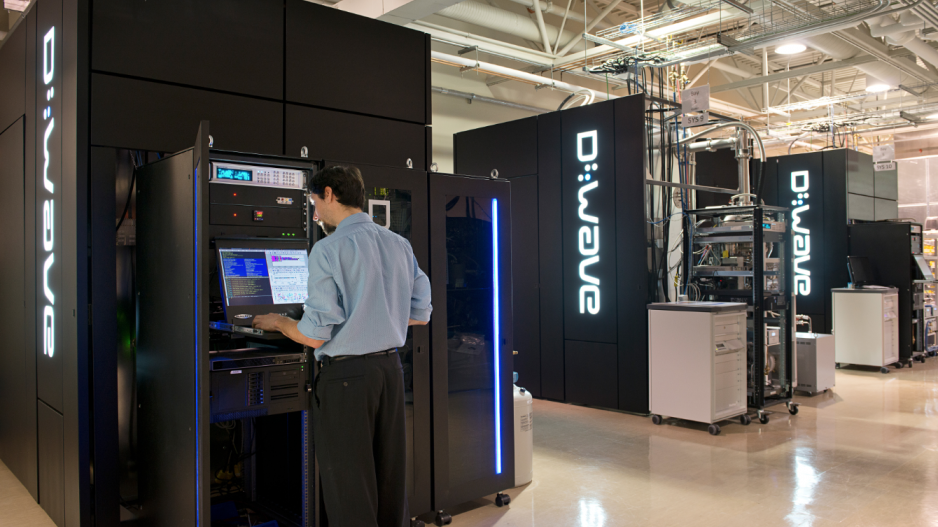D-Wave Systems’ latest computing system had been on the market only a month this past September when the company secured its largest deal since its founding in 1999.
D-Wave won’t disclose financial details, but the agreement to supply a lab jointly operated by NASA, Google (Nasdaq:GOOG) and the Universities Space Research Association with 1,000-qubit processors covers seven years.
And within NASA’s Ames Research Center, the three partners are relying on the Burnaby company’s technology to make big advances in the study of artificial intelligence (AI) and machine learning – a task that’s been stymied somewhat by the limits of present-day supercomputers.
While regular computers make calculations using two bits – ones and zeroes – quantum computing systems use qubits, which possess a “superposition” allowing them be one and zero at the same time. This means the system can calculate all possible values in a single operation, opening up the ability to make far shorter work of computations that would otherwise take thousands of years.
Eric Ladizinsky, D-Wave’s chief scientist, said when an organization like Google invests in a quantum computing system to develop AI, it’s trying to better understand natural language and the way the human brain recognizes patterns, so machines can learn from experience.
“The computations you have to do to learn efficiently are quite horrendous if you’re trying to build large-scale neural nets, for instance,” he said. “People who are buying our systems right now are buying a technological trajectory.”
Meanwhile, the number of potential commercial applications for quantum computing systems is growing, according to Ladizinsky.
They could be used to examine financial markets to avoid a repeat of the 2008 financial crisis. They could be given more mundane tasks such as instantly calculating every possible FedEx route to minimize delays and fuel consumption on trucks and airplanes that deliver packages.
“You can’t do that on a supercomputer; you just can’t,” Ladizinsky said. “The whole [quantum computing] field started because there was a realization that there are classes of problems that will forever remain beyond our reach as humans if we only have access to classical physics and their computing systems.”
Interest in quantum computing has been creeping further from university research labs over the past decade and into the private sector.
Among the deals D-Wave has made since its new system became available in August was an agreement to supply U.S. defence contractor Lockheed Martin with the upgraded 1,000-qubit processor, which doubles the capacity of its previous 500-qubit model.
Meanwhile, chipmaker Intel (Nasdaq:INTC) announced in September it would invest US$50 million into quantum computing research of its own.
But this new type of computing power available to private corporations can play against the public interest, according to David Poole, a University of British Columbia computer science professor specializing in artificial intelligence.
“People like Google and Facebook (Nasdaq:FB) are just hiring the best data scientists,” he said. “I don’t know what’s going to happen when you have all these people with lots of computing resources … who are effectively all working for big private companies as opposed to more public universities.”
While universities are interested in advancing science and making research public, Poole said he’s concerned the big leaders in technology are there only to make profit.
“Google’s interested in it because it might be useful for the long-term future, not because it’s going to solve any of their immediate problems.”
@reporton



